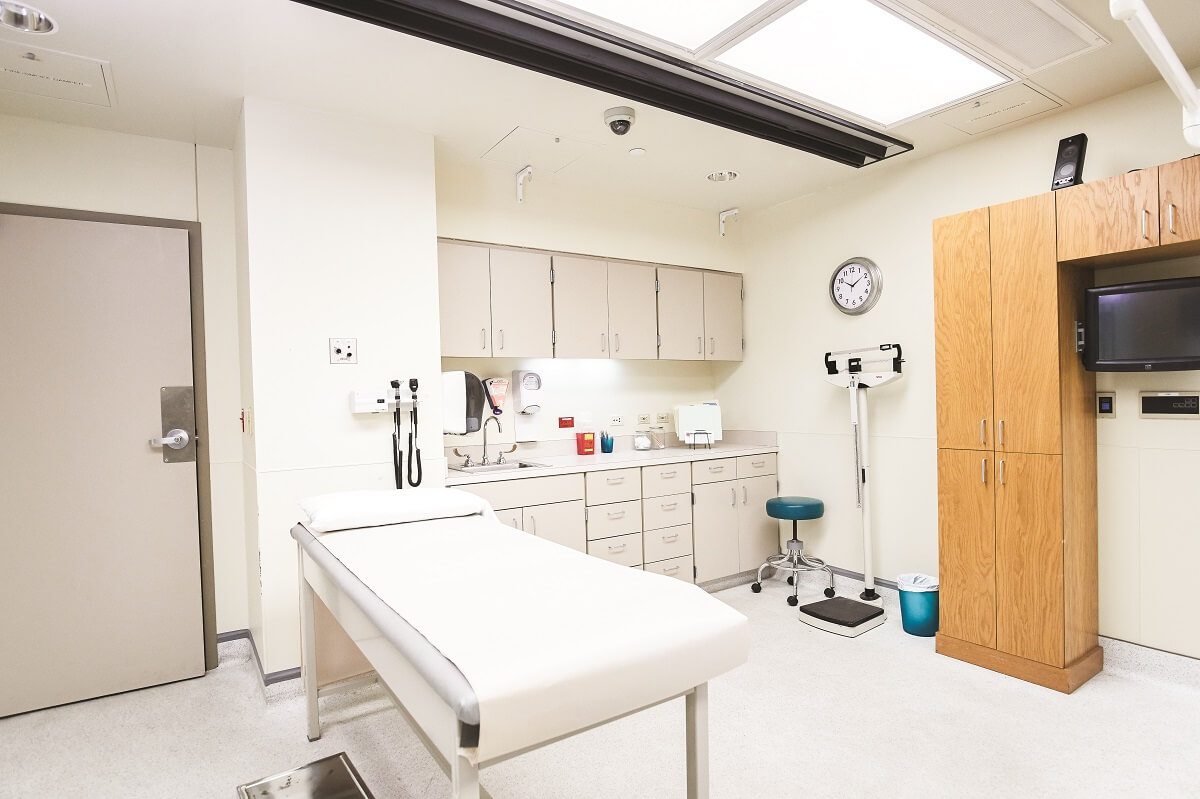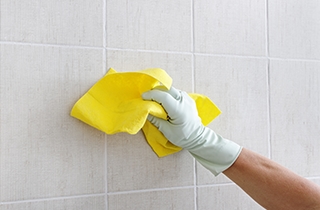How Long Do Pathogens Live on Surfaces?
Table of Contents
- How Long Do Cold Germs Live on Surfaces?
- How Long Does the Flu Virus Live on Surfaces?
- How Long Does COVID-19 Last on Surfaces?
- How Long Does C. diff Live on Surfaces?
- How Long Does MRSA (Staph) Live on Surfaces?
- How Long Does C. auris Live On Surfaces?
- Disinfection Guidelines to Address These Pathogens
- Beyond COVID-19: The Importance of Disinfecting Against Other Pathogens
- A Proper Disinfection Protocol
Even though the worst of the COVID-19 pandemic is over, we're still much more aware of hygiene and disinfection.
Businesses are still trying to figure out how to keep things clean and healthy. A quick wipe-down isn't enough anymore. Business owners need to know things like, "How long do germs live on surfaces?" and "How long should disinfectants sit to work properly?"
Hospitals, which already have good cleaning procedures, are still having a hard time. COVID-19 isn't the main health problem now, but it still affects hospitals. They're still busy and short-staffed, making keeping things clean harder. Infections caught in hospitals (HAIs) like MRSA and drug-resistant germs like C. auris are still a big worry.
We still have to worry about regular sicknesses like colds and the flu, and we can't forget about COVID-19 and those drug-resistant germs. Knowing how long these germs can live on surfaces is really important so we can clean and disinfect them properly.
Many germs can live outside the body much longer than you might think - sometimes for months.
How Long Do Cold Germs Live on Surfaces?
Cold viruses can survive on indoor surfaces for up to seven days. However, their ability to infect someone typically decreases significantly after about 24 hours.
This means that while the virus may still be present, the risk of transmission from touching a surface is highest within the first day. Factors like temperature, humidity, and the initial amount of virus present can also affect how long it remains infectious.
Disinfecting surfaces, especially frequently touched ones like doorknobs, light switches, and keyboards, can help reduce the spread of cold viruses.
How Do You Catch a Cold?
The common belief that you catch a cold from being cold is a myth. Colds are caused by viruses, not the weather.
The most common way to catch a cold is by being near someone who is infected. When a person with a cold coughs or sneezes, they release tiny droplets containing the virus into the air. Breathing in these droplets can lead to infection.
Another common way to catch a cold is bytouching a contaminated surface (like a doorknob) and touching your eyes, nose, or mouth.
Tips to Avoid Catching A Cold
Frequent handwashing with soap and water is one of the best ways to prevent spreading colds. Avoid touching your face, especially your eyes, nose, and mouth.
Staying away from people who are sick is also helpful. In situations where close contact is unavoidable, wearing a mask can help protect you from inhaling respiratory droplets.
Remember, practicing good hygiene is the best defense against colds!
How Long Does the Flu Virus Live on Surfaces?
The flu viruses (influenza A and influenza B) can survive and remain infectious on hard, nonporous surfaces for up to 24-48 hours.
If you send someone home on a Monday morning because they seem sick, and they get flu virus on the doorknob as they’re leaving, that doorknob could be a flu hazard for your customers until Wednesday morning.
On cloth, paper, and tissues, influenza survives for less than 8-12 hours. And on skin, that survival window is even smaller - a matter of minutes - instead of hours. You should still probably think twice about going for a handshake.
The good news is that the flu virus is not very hard to kill. Chlorine, hydrogen peroxide, soap, iodine-based antiseptics, and alcohol can all kill the flu virus. Heat at approximately 167°F (75°C) can also eliminate the virus.
How Long Does COVID-19 Last on Surfaces?
According to research, SARS-CoV-2, the virus that causes COVID-19, can live on surfaces for hours or even days.
Initial Findings and Temperature's Impact
An earlier study indicated the virus could survive for up to 4 hours on copper, 24 hours on cardboard, and two to three days on plastic and stainless steel. More recent research highlights the impact of temperature.
Colder temperatures allow the virus to survive longer. For example, at 68°F/20°C, the virus can remain viable on cotton for nearly two weeks. On surfaces like glass, steel, vinyl, paper, and polymers (like those used in currency), the virus persisted for the entire 28-day study duration. This demonstrates the potential for the virus to survive on surfaces for nearly a month if not addressed.
Airborne Transmission
Even the earlier, more conservative study found that SARS-CoV-2 aerosols can remain airborne for up to three hours. This means that if someone with the virus exhales it into the air, others could be infected for up to three hours afterward. This underscores the importance of mask-wearing and proper ventilation.
Ongoing Vigilance and Prevention
While COVID-19 is no longer a novel illness, we continue to learn more about it. Although some details may evolve, the central message remains consistent: SARS-CoV-2 is resilient and can spread readily if precautions aren't taken.
Alongside mask-wearing and physical distancing, regular cleaning and disinfection are essential. Frequently wipe down high-touch surfaces. Consider professional COVID-19 cleaning services to help combat the spread. Use disinfectants from the EPA's list of approved products for SARS-CoV-2 and follow proper safety procedures.
How Long Does C. diff Live on Surfaces?
Clostridioides difficile, or C. diff, spores can survive formonths or even years on surfaces and in soil.
This remarkable resilience is due to a protective coating shielding inactive spores from environmental stressors. This prolonged survival time makes C. diff a particularly challenging pathogen, especially in healthcare settings.
What is C. diff?
C. diff is a bacterium that, in its active form, can cause severe diarrhea and colon inflammation. Outside the body, C. diff transforms into these hardy spores. If these spores are ingested and reach a person’s intestines, they can become active bacteria again, potentially causing serious illness.
C. diff is listed as an “urgent threat” in the CDC’s most recent report on antibiotic-resistant threats.
Who is at Risk of Contracting C. diff?
While healthy individuals are less susceptible to C. diff infection, anyone can be at risk, especially those who have recently taken antibiotics. People taking or who have taken antibiotics within the last month, as well as those with weakened immune systems, are at significantly increased risk.
Antibiotics can disrupt the balance of bacteria in the gut, making individuals more susceptible to C. diff infection. C. diff is listed as an "urgent threat" by the CDC due to its severity, increasing antibiotic resistance, and the difficulty in treating some infections.
C. diff in Healthcare Settings
C. diff presents a special challenge in healthcare settings. C. diff resists the bactericidal effects of many common hospital disinfectants.
Furthermore, it targets individuals on antibiotics and those with compromised immune systems. As such, hospitals and other medical facilities can become hotspots for C. diff infections if proper precautions aren't taken.
C. diff spores are resistant to most standard hospital disinfectants, requiring sporicidal disinfectants for effective cleaning. If a C. diff case occurs in a medical facility, extra steps, such as enhanced cleaning protocols and specific disinfectants effective against C. diff spores, are essential to control its spread.
How Long Does MRSA (Staph) Live on Surfaces?
MRSA, or Methicillin-resistant Staphylococcus (staph) aureus, can survive on surfaces for days, weeks, or even months.
This includes fabrics like towels, clothing, mop heads, and plastics commonly used in hospitals. Studies on the types of plastics and fabrics used most often in hospitals make it clear that MRSA can thrive on blankets, scrubs, and more without thorough, diligent cleaning.
This long lifespan outside the body contributes to MRSA's persistence as an infectious threat.
What is MRSA?
MRSA is a bacterium that causes infections, most commonly skin infections. However, it can also lead to more serious conditions like pneumonia and sepsis.
Who is at Risk of Contracting MRSA?
Anyone can contract MRSA. Transmission is more likely in crowded environments where people share equipment or have close skin-to-skin contact. Those with cuts or abrasions are particularly vulnerable.
MRSA in Healthcare Settings
While MRSA isn't exclusive to medical facilities, it poses a significant risk in hospitals. Approximately 5% of U.S. hospital patients carry MRSA (Centers for Disease Control and Prevention, 2019).
As such, MRSA can potentially be transmitted to others even if they don't develop an active infection. This, combined with MRSA's antibiotic resistance and ability to survive for extended periods on surfaces, makes it a serious concern.
How Long Does C. auris Live on Surfaces?
Current research indicates that Candida auris (C. auris) can survive on surfaces for weeks. Furthermore, patients who have recovered from an active C. auris infection can still carry the fungus for several months.
The maximum length of colonization isn't yet known. However, C. auris can persist for extended periods in both patients and the environment.
More research is needed to fully understand the longevity of C. auris on surfaces and the maximum duration of patient colonization.
What is C. auris?
C. auris is a fungal infection. This "superbug" yeast can cause invasive infections by entering the bloodstream and spreading throughout the body.
It is resistant to many common antifungal drugs, including those used for other Candida infections. Accurate identification requires specialized laboratory methods.
Misidentification by conventional tests can lead to improper treatment and insufficient infection control measures, facilitating its spread.
Who is Most at Risk?
C. auris primarily affects individuals with multiple medical problems, particularly those with frequent or prolonged hospital or nursing home stays.
People with weakened immune systems (e.g., from chemotherapy), those on multiple antibiotics, and individuals with medical tubes (breathing tubes, feeding tubes, or catheters) are also at increased risk.
Disinfection Guidelines to Address These Pathogens
Appropriate cleaning and disinfection protocols are crucial in combating common illnesses, healthcare-associated infections, and drug-resistant pathogens.
A few appropriate steps to take include:
- Ensure that all staff follow appropriate hand-washing procedures.
- Frequently clean and disinfect high-touch surfaces and shared tools such as computers.
- Have a comprehensive, regular cleaning and disinfecting schedule that includes disinfectants approved by the EPA to combat pathogens like SARS-CoV-2. Make sure that even less commonly touched areas are cleaned and disinfected regularly.
- Issue proper PPE such as gowns, gloves, and masks to staff. Ensure that they are used appropriately and disposed of properly.
- When dealing with severe threats like COVID-19 or C. auris, take appropriate contact or enhanced barrier precautions. This can include measures like spatial separation, privacy curtains, isolated rooms, and PPE when dealing with infected patients.
- Ensure staff are educated about infection control recommendations for unique threats as needed.
- Monitor adherence to infection control practices and implement supervised cleaning of affected areas. Professional cleaning can help protect from the most dangerous pathogens, according to all appropriate guidelines, without putting staff at risk.
Beyond COVID-19: The Importance of Disinfecting Against Other Pathogens
While COVID-19 remains a concern, other pathogens pose significant risks. Although the pandemic's acute phase has lessened, healthcare-associated infections (HAIs) and secondary infections remain a threat, especially for those with compromised health or seeking medical treatment.
The Challenge of Diverse Pathogens
Influenza, MRSA, C. auris, and other pathogens present unique challenges. Some spread rapidly, others are difficult to detect, and some are multidrug-resistant. Each requires specific cleaning and disinfection protocols. This diversity makes comprehensive protection complex.
The Solution: Professional Cleaning & Disinfection Services
You could spend your time researching effective antifungal agents for pathogens, checking EPA disinfectant lists, and managing inventory for a wide range of pathogens. Instead, your staff can focus on what they do best: patient care.
Trust ServiceMaster Clean to handle your disinfection services. Our trained professionals have the expertise, equipment, and knowledge to get the job done right.
A Proper Disinfection Protocol Can Help the Health of Your Business and Patients
With COVID-19 and so many other pathogens lying in wait to attack those with compromised immune systems, cleaning, and disinfection are an enormous priority. Whether you’re a hospital trying to ensure the best clinical outcomes or a local business trying to protect your staff, customers, and reputation, bringing in professional disinfection services is an important way to protect yourself and those around you.











